Code of Ethics - rules or values? (INT-M5-02-EN)
Objectives
- To highlight the importance of the Code of Ethics;
- To combat information disorders (fake news);
- To explore the differences between the Code of Ethics in Journalism and Social Media;
- To create a unified Code of Ethics that can be applied to both fields.
Target group(s)
Teachers, librarians, Counsellors, youth counsellors, sport-trainers, journalists, social media editors, students.
Description
Introduction
- Briefly explain the rise of fake news and its impact on society. Introduce the concept of a Code of Ethics and its significance in maintaining journalistic and social media integrity. Make comparison in terms of ethics and integrity.
Comparison Discussion
- Divide the participants into two groups: one representing journalists and the other representing social media influencers. Ask each group to discuss and list the key principles in their respective Codes of Ethics. For this purpose, you can provide them with examples of the code of ethics of the relevant field. Just to give an insight into the understanding of the topic.
- Facilitate a discussion on the differences and similarities between the two sets of principles.
Group Reflection
- Bring the groups back together for a reflective discussion.
- Discuss how the differences in Codes of Ethics might contribute to challenges in addressing information disorders. .
Unified Code of Ethics Brainstorming
- Form mixed groups with participants from both the journalism and social media sides.
- Instruct each group to brainstorm and propose a unified Code of Ethics that incorporates the essential principles from both journalism and social media perspectives.
- Encourage discussions on compromises and finding common ground.
Code of Ethics Presentation
- Each group presents their proposed unified Code of Ethics.
- Encourage participants to explain the rationale behind their choices and how the code addresses the challenges posed by information disorders.
Discussion and Feedback
- Facilitate a discussion on the strengths and weaknesses of each proposed Code of Ethics.
- Encourage participants to provide constructive feedback to improve the codes.
Finalization
- Merge the insights and feedback from the discussion to create a final, refined unified Code of Ethics. Discuss the importance of implementing and adhering to such a code in both journalism and social media.
Closing Remarks
- Summarize the key takeaways from the exercise.
- Emphasize the participants' role in upholding ethical standards to combat information disorders (fake news).
Please note*
Unified Code of Ethics should be developed based on the participants' inputs, but you can find a general framework as a starting point in the handouts.
Material
- Two Examples: Code of Ethics in Journalism, Code of Ethics in Social Media;
- Flipchart, paper, posters, pen, coloured markers.
Methods
- Experiential learning
- Discussion
- Group work
- Examination and Evaluation
Advice for Facilitators
The facilitator should be prepared for the workshop both in terms of process and content.
Actively involve participants through discussions and group activities. This enhances engagement and deepens understanding.
Sources
Bercko, S. (2021). Guide to media Literacy. Integra Institute (script).
Handouts
Yes, please download it from here: Handout 1
Calendar
Announcements
- - There are no announcements -

